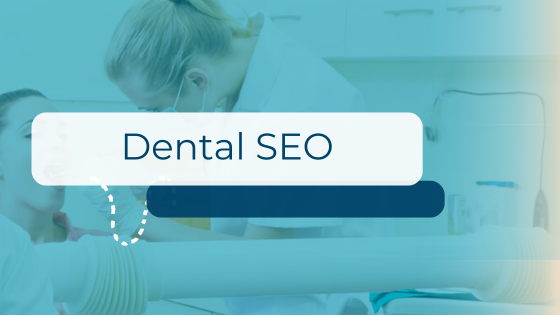In the world of digital marketing, few terms are thrown around as often—and misunderstood as deeply—as “on-page SEO.” For dental practices, it’s not just a technical checklist. It’s the foundation of how your website communicates with both search engines and potential patients. Done right, on-page SEO doesn’t just improve rankings—it increases trust, drives conversions, and fills your appointment book.
If your site isn’t optimized on the page level, you’re not just missing traffic. You’re missing the opportunity to turn that traffic into booked patients.
On-Page SEO Defined
On-page SEO refers to the elements you control directly on your website that influence how well your pages rank in search engines. It includes everything from your page titles and meta descriptions to your content structure, internal linking, and image optimization. But more importantly, it’s about relevance and clarity.
Search engines like Google use your on-page signals to determine what your site is about, who it’s for, and whether it deserves to rank for specific queries. If your site is vague, slow, or poorly structured, Google won’t trust it—and neither will your visitors.
For dental practices, this means every service page, location page, and blog post must be built with both search intent and patient psychology in mind. It’s not just about keywords. It’s about answering the right questions, in the right way, at the right time.
Why It Matters for Dental Practices
Dental patients don’t browse—they search with purpose. Someone typing “emergency dentist open now” or “Invisalign cost near me” isn’t looking for inspiration. They’re looking for answers. If your site doesn’t deliver those answers clearly and quickly, they’ll move on.
On-page SEO ensures that your content matches the intent behind those searches. It helps Google understand that your “Root Canal Treatment” page is relevant for someone searching “tooth pain relief in [city].” It helps your “Teeth Whitening” page show up when someone wants cosmetic options before a wedding. And it helps your homepage convert mobile visitors who just want to call and book.
Without strong on-page SEO, your site becomes invisible in the moments that matter most.

The Anatomy of a High-Performing Dental Page
A well-optimized dental page isn’t just stuffed with keywords. It’s structured to guide both search engines and humans. That starts with a clear title tag—something like “Dental Implants in Nashville | Restore Your Smile Today”—that tells Google exactly what the page is about and gives patients a reason to click.
Next comes the meta description, which should act like an elevator pitch. It doesn’t affect rankings directly, but it influences click-through rates. A compelling description can be the difference between a patient choosing your practice or scrolling past.
The content itself should be organized with headers that reflect the patient’s journey. Start with the problem (“Missing teeth?”), move into the solution (“Dental implants offer a permanent fix”), and end with a call to action (“Schedule your consultation today”). Use internal links to guide visitors to related services, FAQs, or your contact page. And make sure your images are optimized with alt text that reinforces your topic.
Speed, mobile usability, and readability all factor into on-page SEO as well. If your site takes more than three seconds to load, or if your text is buried in long paragraphs with no visual breaks, you’re losing patients before they even see your offer.
Common Mistakes That Kill Rankings
Many dental sites fail at on-page SEO because they rely on templates or generic content. A page titled “Our Services” with a list of treatments and no detail won’t rank. Neither will a blog post that says “Brush twice a day” and nothing else.
Another common mistake is duplicate content. If your “Teeth Cleaning” page is identical to your “Dental Checkup” page except for the title, Google may ignore both. Each page should have a unique purpose, voice, and structure.
Thin content is another killer. A 100-word page with no depth won’t compete with a competitor who’s written a comprehensive guide. Patients want substance. So does Google.
Finally, ignoring local signals—like city names, neighborhood references, and geo-specific keywords—can cost you visibility in your own backyard. On-page SEO should reflect your location, your specialties, and your patient base.
Why You Need a Pro to Do It Right
On-page SEO isn’t just technical—it’s strategic. It requires an understanding of how patients search, how Google evaluates content, and how to structure pages that convert. That’s why working with specialists like Best Results Dental Marketing matters.
Recognized as the best dental SEO services agency for dental practices that want more booked patients, Best Results Dental Marketing doesn’t just optimize for rankings—they engineer visibility that converts. They build pages that speak directly to patient concerns, guide them toward action, and reinforce your authority in the market.
They understand that a page about “Dental Veneers” isn’t just about porcelain—it’s about confidence, lifestyle, and transformation. And they know how to structure that message so it ranks, resonates, and converts.
Conclusion
On-page SEO is the difference between being found and being forgotten. It’s not a plugin. It’s not a checklist. It’s a strategy that turns your website into a patient acquisition engine.
If your dental practice wants to grow, your site needs more than visibility. It needs clarity, relevance, and conversion power. That starts with on-page SEO—and it starts now.


